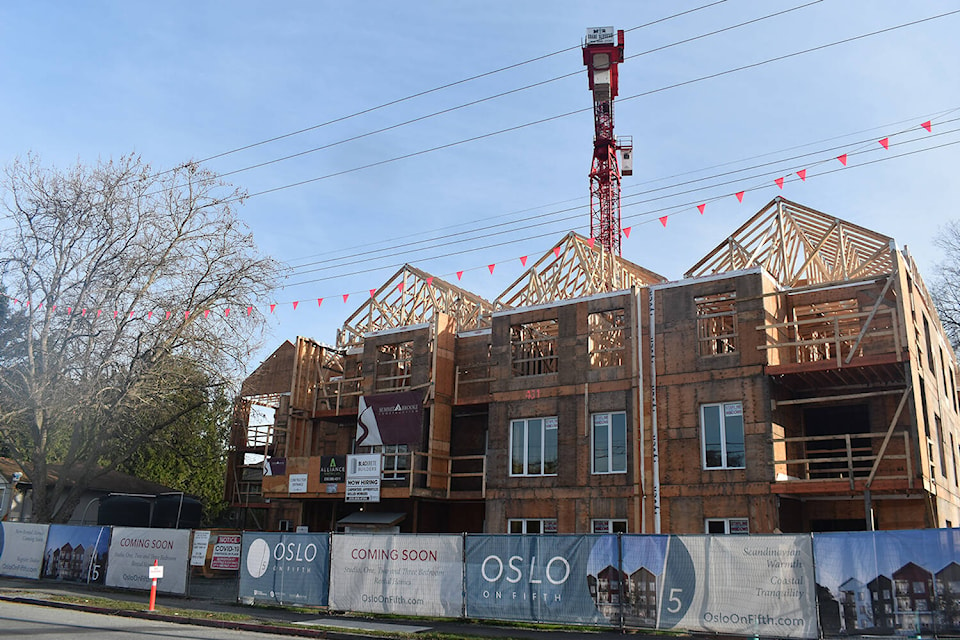A housing advocacy task force is being recommended for the Central Okanagan.
The recommendations come after a regional housing strategy draft report was put forward to the regional district on May 30, which also called for creating a land acquisition initiative to create affordable housing opportunities.
The report will be presented to Central Okanagan municipal councils throughout June.
Nancy Henderson, a senior local government advisor working on the housing strategy report, said the role of the task force would be to advocate senior levels of government on the Central Okanagan housing crisis.
“The idea is not to take away from other initiatives already in place, but to add to and go with a coordinated voice to raise the profile of the housing crisis in the Central Okanagan,” Henderson said.
In the strategy report information gathering process, Henderson said a recurring theme was the lack of land as the biggest barrier to generating more affordable housing.
“The regional district has a role to play in looking at land availability on a regional basis which smaller municipalities don’t have the same resource capacity to do,” she said.
Also recommended in the report is establishing a digital website to serve as an ‘information clearing house’ on housing issues in the Central Okanagan, and establish best practices with regard to protecting and enhancing rental housing stock.
Kelowna director Brad Sieben who would sit on the task force, questioned if its vision would possibly conflict with that of individual Central Okanagan municipalities.
He also cited an absence of specific ideas in the strategy platform beyond calling for more collaboration and discussion.
“I will be interested to hear the feedback from individual municipalities to this…there are different needs in each community and the disparity of population is significant within the region,” Sieben said. “Rural communities have very different needs from Kelowna with a 145,000 population.”
Rick de Jong, the West Kelowna director, applauded the report, pointing out that a regional approach to housing acknowledges what takes place in one community can affect another.
“A prime example of that is a single-family residential development in West Kelowna is going through the roof yet we don’t see so much of that right now in Kelowna,” de Jong said.
He also cited the confusion many people have defining what affordable and attainable housing is, noting the federal government defines affordability as mortgage payments up to 30 per cent of a household gross income.
“What affordability means to two parents who work with two children is radically different from a lone parent with children,” he said.
He also noted the often-stated concept from the real estate industry for municipalities to allow for more housing to be built does not necessarily equate with providing affordable housing.
“Squamish is one example where more homes were built than people coming into that community and housing prices still went up 30 per cent. We have to start thinking outside the box, building housing differently and in different design forms.”
Kelowna director Luke Stack was intrigued by the land acquisition concept but noted some report recommendations seemed repetitive to what is already happening at a municipal level.
He said the land acquisition concept, similar in idea to how municipalities secure parkland, has been talked about before, but he feels federal or provincial funding commitment needs to play a role in such a process.
He added the digital information service would involve a lot of work to relay what we already know - housing prices are high and in short supply - but would be devoid of solutions.
Wayne Carson, the rural director for Okanagan Area West, said pricing stress on housing is now evident in his area, something he never thought would happen.
He cited the example of a Killiney Beach smaller house not on lakefront property which was on the market for $1.1 million.
“So this issue is not just in the city, it creates a lot of stress in the electoral areas. I have residents in my area who are living paycheque to paycheque,” he said.
“Houses are a huge cost even in outlying areas. I always thought areas like mine would be a place people could go to find their first home, perhaps build a house themselves, and that we’d always have some space for affordable housing.
Loyal Wooldridge, RDCO board chair, said he liked the task force idea but wanted it to have a set time limit and specific goals, not become another ongoing government-funded entity.
“The land trust or reserve could be advantageous but would need more collaboration for there to be buy-in on it,” he added.
Municipal councils will have the chance to weigh in on presentations of the draft report this month before a final report is submitted to the regional district board.
READ MORE: Cooler weather brings slow start to B.C.’s wildfire season, but July expected to heat up
READ MORE: B.C. researchers with 1st-in-Canada energy modelling centre take aim at decarbonization
To report a typo, email:
newstips@kelownacapnews.com.
@KelownaCapNews
newstips@kelownacapnews.com
Like us on Facebook and follow us on Twitter and subscribe to our daily and subscribe to our daily newsletter.
